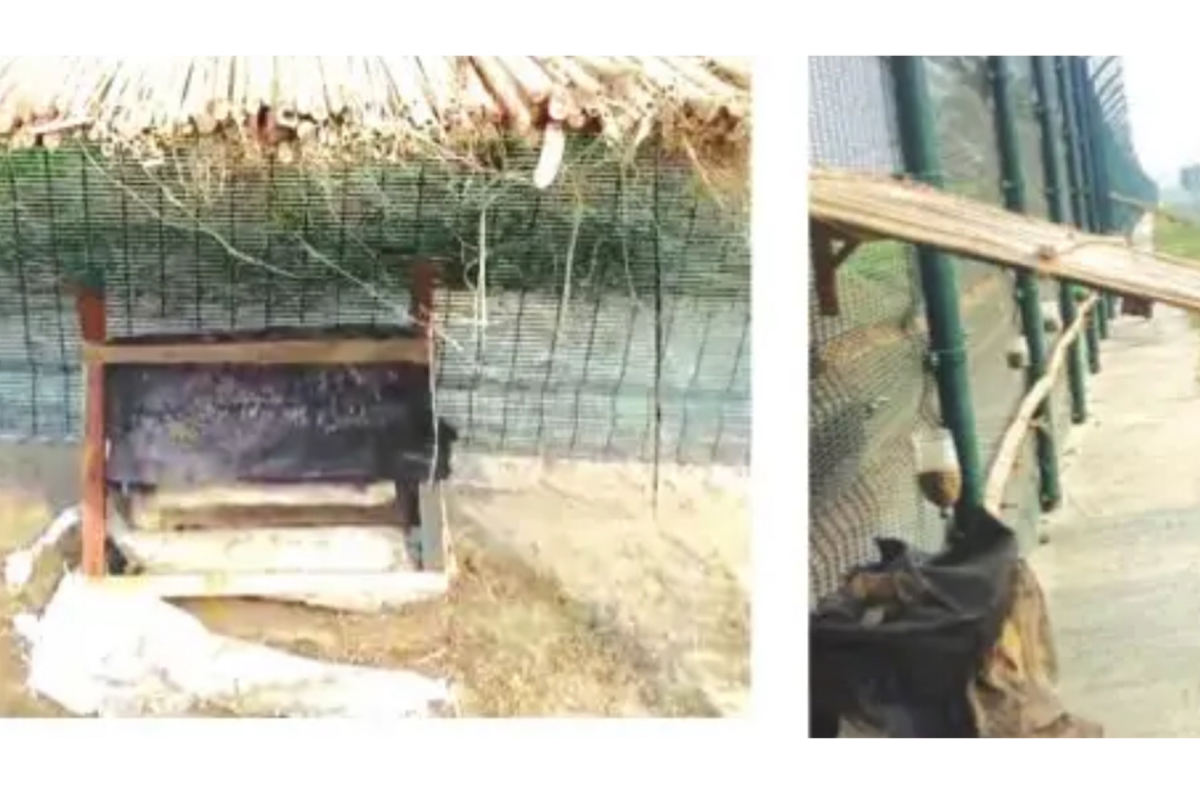The Kadipur border area in Krishnaganj block of Nadia district, which has unveiled a pioneering security model by placing beehives along stretches of the Bangladesh border that combines biodiversity conservation with defense mechanisms, has caught the attention of the National Biodiversity delegation which recently visited the region and which has submitted a confidential report to the central government.
The Indo-Bangladesh border, stretching over 4,156 km, has long been a focal point for various challenges, including infiltration, smuggling, and border disputes. The National Biodiversity Team’s report emphasises the significance of the Kadipur model in addressing these concerns. Bengal alone accounts for a substantial portion of the border, with Nadia covering 222 km, making it crucial in the broader context of border security. On 22 December, a team of experts from the National Biodiversity Authority, including Hemant Kumar and Dr. Sangeeta Mitra, visited Kadipur to inspect a unique biological defense system utilizing bees.
Advertisement
The border area, spanning 2.5 km, features bee boxes strategically placed along barbed wire fencing, complemented by a herbal garden consisting of Shatamuli, Ekangi, Tulsi, Albera, and a special Kulekhara tree known for its defensive properties. The collaboration between the Border Security Force and the Ministry of Ayush has facilitated the installation of these bee boxes.
The innovative approach involves using bees as a deterrent, with the bees attacking any threat to the border upon disturbance of the barbed wire boundary. Moreover, the herbal garden aims to fortify the defense system, with the Kulekhara tree planted beneath the barbed wire, designed to cause discomfort to trespassers.
The proposal also includes the creation of 25-feet reservoirs on both sides of the barbed wire, populated with crabs and spiny fishes, adding an additional layer of defense against unauthorized border crossings. Dr. Sangeeta Mitra, a member of the National Biodiversity Delegation, expressed satisfaction with the Kadipur model, stating: “The measures taken in Kadipur can be introduced in the India-Bangladesh border areas where there are border problems.
This system can be introduced not only in Kadipur or this state but in the whole country.” Hemant Kumar, a member of the National Biodiversity Expert Committee, echoed similar sentiments, highlighting the success of the Kadipur model and advocating for its implementation across the entire IndiaBangladesh border region. Mr Kumar also proposed exploring alternative projects involving local communities in various border areas, emphasizing the need for a comprehensive and collaborative approach.
The report submitted by the National Biodiversity Team to the central government underscores the potential of the Kadipur model to revolutionise border security strategies. The innovative thinking behind the Bee Box initiative could pave the way for a paradigm shift in addressing the challenges faced along the vast Indo-Bangladesh border.











